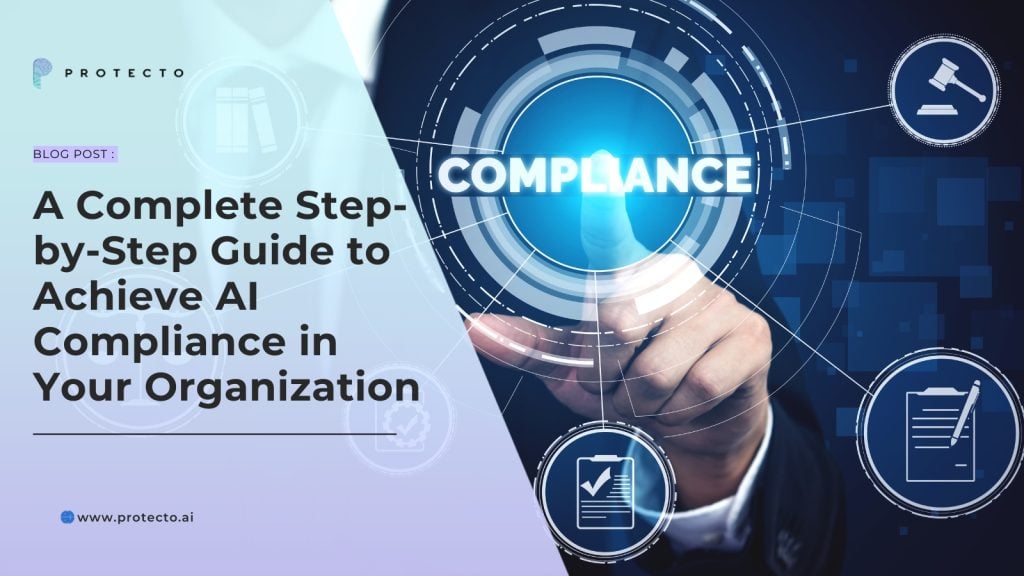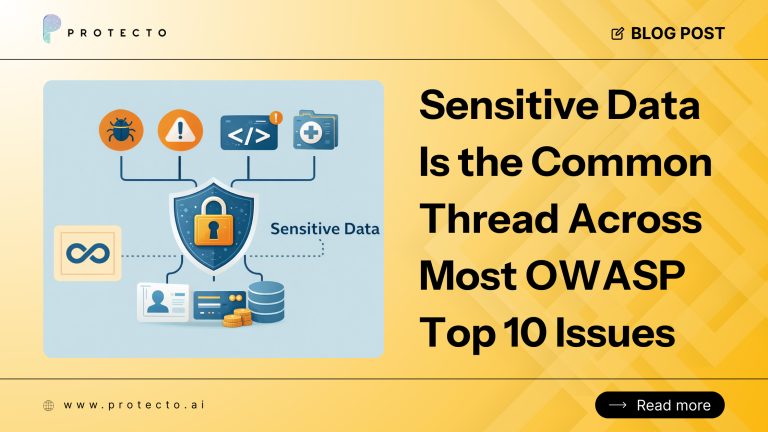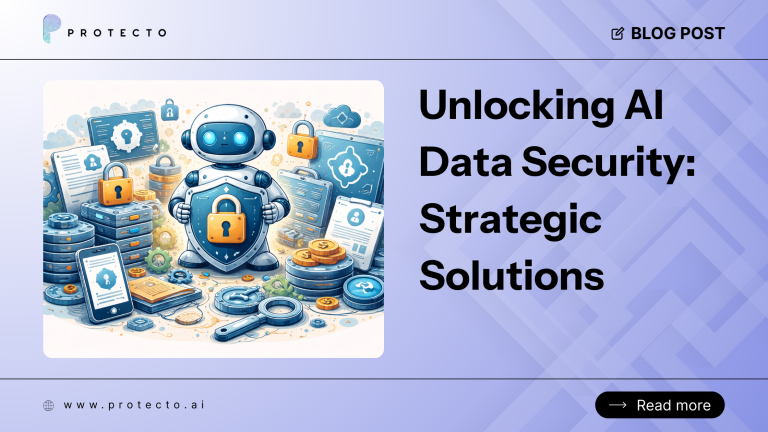AI compliance has become a pivotal concern for organizations in a rapidly evolving technological landscape. It is inconceivable to overlook the growing importance of AI compliance, particularly for entities deeply entrenched in AI operations.
It involves an intricate intersection of legal, ethical, and regulatory dimensions, emphasizing the need for a cohesive approach to ensure comprehensive AI compliance.
Here, we aim to provide a roadmap for organizations to integrate AI compliance into their operations seamlessly. As organizations increasingly harness the power of AI, understanding and implementing robust compliance measures become imperative.
This guide aims to provide clarity and actionable insights, offering a holistic perspective on achieving AI compliance and fostering a culture of responsibility in the ever-expanding realm of artificial intelligence.
Understanding AI Compliance
AI Compliance is a multifaceted domain that intersects legal, ethical, and regulatory considerations, demanding a comprehensive understanding from organizations delving into the AI-driven landscape. It involves aligning artificial intelligence development and deployment with established standards to ensure responsible and lawful practices. In the ever-expanding integration of AI into various operations, the significance of compliance cannot be overstated.
Definition and Scope of AI Compliance
AI Compliance encompasses many principles and guidelines, spanning privacy, security, transparency, and fairness. It goes beyond a mere checklist, requiring a holistic approach and a profound understanding of the ethical implications associated with AI technologies.
Achieving compliance is crucial for building and maintaining trust among users, customers, and regulatory bodies, particularly in industries heavily reliant on AI systems for sensitive data handling and decision-making.
Suggested Read: HIPAA Compliance in the Age of AI – A Comprehensive Guide
Step 1: Establishing an AI Compliance Team
The journey towards AI compliance begins with the strategic formation of a dedicated team, a cornerstone in helming the complexities of this developing landscape. Identifying key stakeholders across departments and functions is paramount. This cross-functional team ensures a diverse representation, integrating expertise from legal, IT, data management, and ethical considerations.
Building a Cross-Functional Team
An effective AI Compliance team should be a blend of professionals with distinct yet complementary skills. Legal experts bring an understanding of the regulatory landscape, data scientists contribute insights into AI systems, and ethicists offer perspectives on the ethical implications of AI decision-making. The collaboration of these varied skill sets enables a holistic approach to compliance.
Roles and Responsibilities of the Compliance Team
Defining clear roles and responsibilities within the compliance team is essential for streamlined operations. Legal experts guide through regulatory frameworks, data scientists conduct audits, and ethicists ensure ethical considerations are embedded in AI processes. The establishment of this team sets the stage for subsequent steps, laying the foundation for a robust AI compliance framework.
Step 2: Conducting a Comprehensive AI Audit
Establishing a robust AI Compliance framework begins with a meticulous examination of existing AI systems and processes through a comprehensive audit. This step aims to assess an organization’s current state of AI implementation, identifying potential risks and compliance gaps that need attention.
Assessing Current AI Systems and Processes
The audit thoroughly evaluates AI applications, algorithms, and models in use. This includes scrutinizing data collection, processing methods, and decision outputs. The goal is to understand how AI is integrated into different facets of the organization and its impact on data privacy, security, and ethical considerations.
Identifying Risks and Compliance Gaps
By scrutinizing AI systems, organizations can pinpoint potential risks associated with data handling, model biases, and overall system vulnerabilities. Additionally, compliance gaps with relevant regulations and ethical standards become apparent. This identification phase lays the foundation for prioritizing areas that require improvement or corrective actions.
Prioritizing Areas for Improvement
Once risks and compliance gaps are identified, prioritization becomes crucial. Not all aspects may carry equal weight, and organizations must focus on high-priority areas that pose significant risks or non-compliance threats. This prioritization sets the stage for strategically allocating resources and efforts during the subsequent steps of the AI Compliance journey. Conducting a comprehensive AI audit is proactive, allowing organizations to handle problems before they escalate and ensuring a more streamlined path toward achieving and maintaining AI Compliance.
Step 3: Implementing Privacy by Design
Ensuring AI compliance involves a strategic approach from the inception of AI systems, and the implementation of Privacy by Design is a fundamental step in this journey.
Integrating Privacy Considerations from the Start
Privacy by Design emphasizes incorporating privacy measures at the initial stages of AI system development. It requires organizations to embed privacy features directly into the architecture and Design of their AI systems. This approach ensures that privacy considerations are integral to the system’s DNA rather than being retrofitted later.
Building Privacy Controls into AI Systems
Practical implementation involves integrating privacy controls into the AI systems. This includes robust mechanisms for data anonymization, encryption, and access controls. Organizations can mitigate the threat of data breaches and unauthorized access by adopting privacy-centric technologies and aligning their AI initiatives with regulatory expectations.
Adopting Privacy by Design Best Practices
Organizations need to adopt best practices associated with Privacy by Design. This includes conducting thorough privacy impact assessments, regularly reviewing and updating privacy measures, and fostering a culture of privacy awareness among stakeholders. Organizations commit to privacy and compliance throughout the AI lifecycle by instilling these practices into their AI development processes.
Step 4: Ensuring Data Governance and Security
In the intricate landscape of AI compliance, data governance and security play a pivotal role in fortifying the ethical and legal foundations of AI systems.
Establishing Robust Data Governance Policies
A crucial initial step involves the establishment of robust data governance policies. This includes clearly defining data ownership, outlining permissible uses, and establishing data quality and integrity protocols. Organizations set the stage for ethical AI practices and facilitate compliance with regulatory frameworks by delineating data handling rules.
Implementing Security Measures for AI Datasets
The security of AI datasets is paramount. This involves employing encryption protocols, access controls, and secure storage solutions to safeguard sensitive information. Organizations must ensure that only permitted personnel can access AI datasets, minimizing the risk of data breaches and unauthorized use.
Addressing Cybersecurity Risks in AI Systems
AI systems are not immune to cybersecurity risks. Proactive measures are required to address potential threats. This includes regular cybersecurity assessments, vulnerability management, and the integration of robust cybersecurity protocols into the AI development life cycle. By managing cybersecurity risks head-on, organizations bolster the resilience of their AI systems and enhance overall compliance.
Also Read: AI Data Privacy and Data Security Checklist: Keep Your Organization Safe and Compliant in 2024
Step 5: Implementing Explainable AI (XAI)
In the realm of AI compliance, transparency and explainability are paramount. Here, we explore the critical step of implementing Explainable AI (XAI) to ensure that AI systems are effective, understandable, and accountable.
Importance of Explainability in AI Models
Explainability is essential for instilling trust in AI models. It is crucial to make AI processes interpretable, especially in sectors where decisions impact individuals’ lives. Understanding the ‘why’ behind AI decisions becomes imperative, influencing user trust, regulatory compliance, and ethical considerations.
Techniques for Achieving Explainability
From leveraging interpretable machine learning models to developing post-hoc explanation methods, organizations can settle on diverse approaches. This involves making complex models more transparent without compromising their predictive power, striking a delicate balance between accuracy and interpretability.
Balancing Explainability with Model Performance
A delicate equilibrium is required between explainability and model performance. While ensuring models are transparent, organizations must also maintain their efficacy. Striking the right balance involves making trade-offs and adopting strategies that align with specific use cases, underscoring the nuanced nature of integrating explainable AI into the broader framework of AI compliance.
Step 6: Documenting AI Processes and Compliance Measures
In pursuing AI compliance, meticulous documentation is the backbone for accountability, transparency, and continuous improvement.
Creating Comprehensive Documentation
The first aspect involves creating comprehensive documentation that details every facet of AI processes and the corresponding compliance measures. This documentation should encompass the intricacies of data handling, model development, and deployment procedures. Clear and exhaustive documentation not only aids internal understanding but also forms a critical resource for external audits and regulatory assessments.
Maintaining Records for Audits and Accountability
Beyond creation, maintaining records for audits and accountability ensures a systematic approach to compliance. These records should be organized, easily accessible, and regularly revamped to reflect the evolving nature of AI systems. Effective record-keeping facilitates swift responses during audits, enabling organizations to demonstrate adherence to established compliance measures.
Documenting Changes and Updates in AI Systems
Given the dynamic landscape of AI technologies, documenting changes and updates is imperative. Updates can come in model updates, policy changes, or procedural adjustments. Such documentation not only aids in understanding the evolution of AI systems but also contributes to proactive risk management and compliance refinement.
In essence, robust documentation practices in this critical phase ensure compliance and pave the way for a culture of clarity and responsibility within organizations venturing into AI.
Step 7: Continuous Monitoring and Improvement
In the dynamic realm of AI compliance, we now focus on the imperative of continuous monitoring and improvement, forming the bedrock of a resilient and adaptive compliance framework.
Implementing Ongoing Monitoring Processes
Continuous monitoring is not a one-time endeavor but an ongoing commitment. This involves real-time surveillance of AI systems, tracking data usage, and ensuring adherence to established compliance measures. Implementing sophisticated monitoring tools aids in the early detection of anomalies, contributing to a proactive rather than reactive compliance approach.
Regularly Updating Compliance Measures
Organizations must regularly update compliance measures to stay abreast of evolving regulations and technological advancements. It is vital to revisit periodically and, if necessary, revise the established compliance protocols. This ensures that the organization remains aligned with the latest legal and ethical standards governing AI.
Learning from Incidents and Improving Processes
No compliance framework is foolproof, and incidents may occur. The key lies in learning from these incidents and leveraging them as opportunities for improvement. Organizations should conduct thorough post-incident analyses, identify root causes, and implement corrective measures.
Final Thoughts
Highlighting the iterative nature of AI compliance, organizations are encouraged to view compliance not as a one-time task but as an ongoing commitment to staying abreast of evolving regulations and ethical considerations.
For your organization to achieve and maintain AI compliance, Protecto can be a helpful ally with its advanced data privacy and security features. Schedule a demo with Protecto now.



